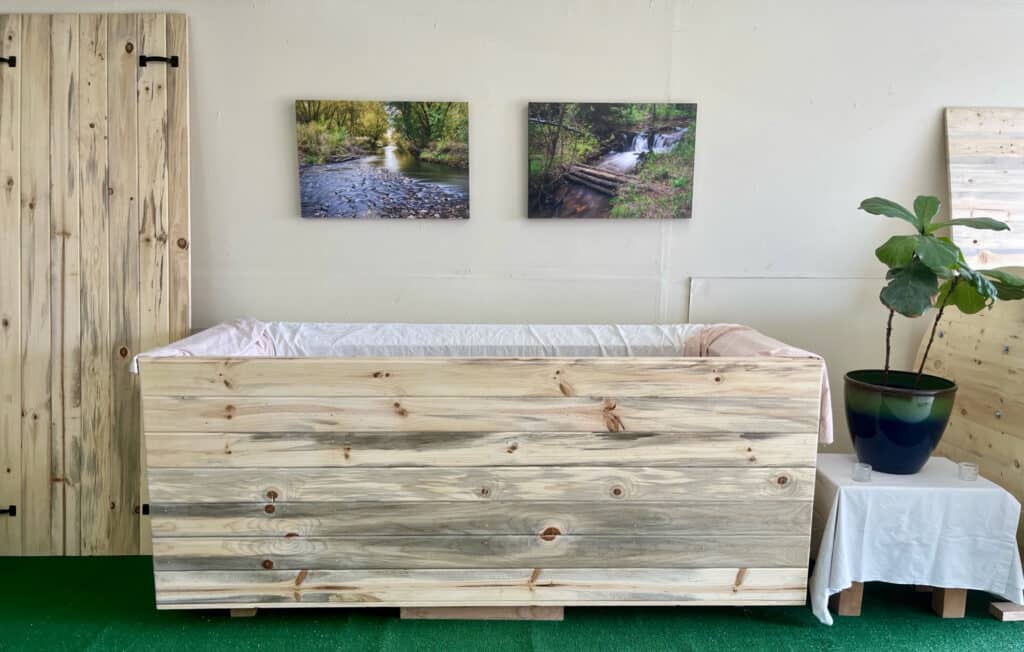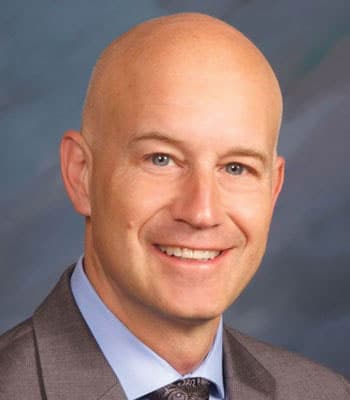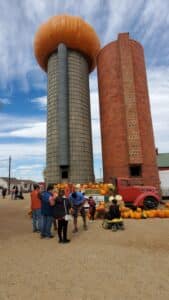A new Foothills — again
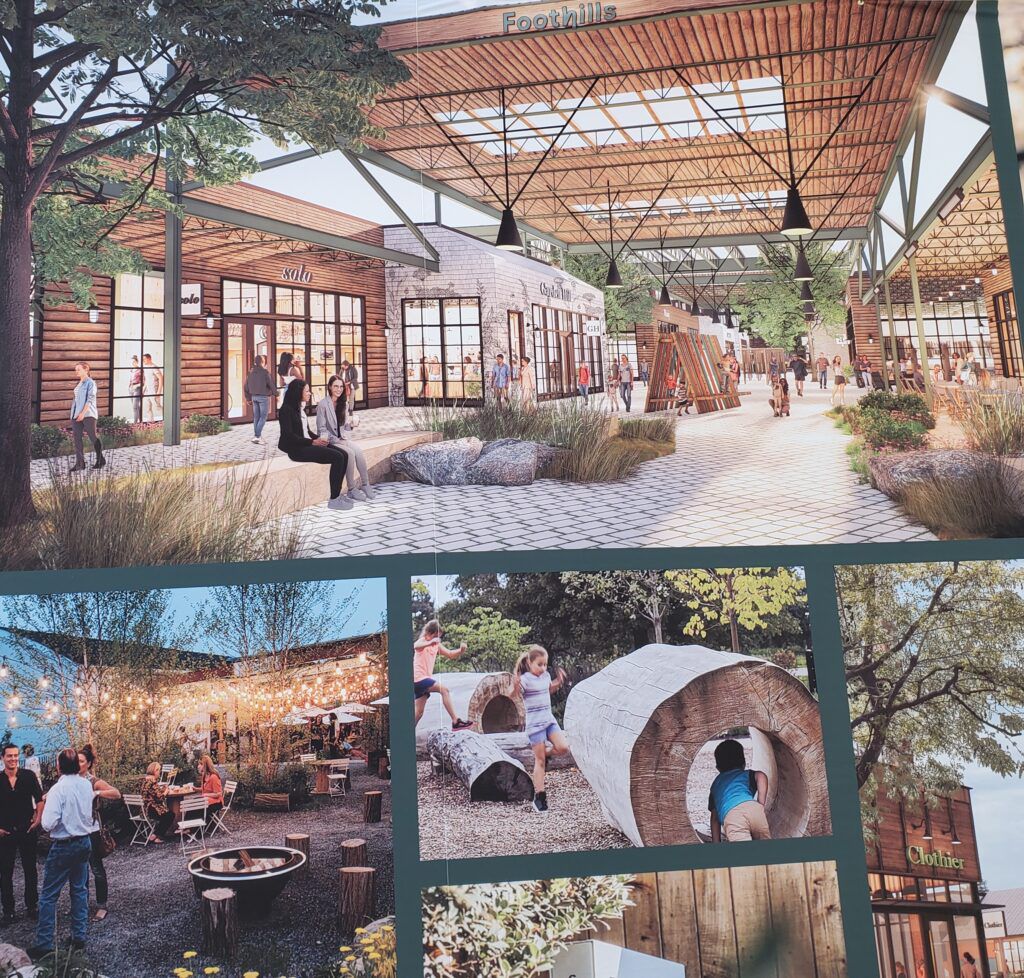
FORT COLLINS — The new owners who want to revitalize midtown Fort Collins’ half-century-old Foothills mall say they envision “a vibrant, walkable, mixed-use destination” that will “enhance the lifestyle of local residents by integrating green open spaces, modern design inspired by nature, and dynamic retail that includes restaurant and bar options.”
Sound familiar?
Nearly eight years ago, another set of new owners sounded the same optimistic tone as they prepared for a grand reopening. The renovated mall, said Don Provost, founding principal of Greenwood Village-based Alberta Development, would be “a thriving, vibrant retail and community experience for many years to come” with “unique-to-market retailers and restaurants, state-of-the-art entertainment, and indoor and outdoor gathering spaces.”
But it wasn’t. Nearly 20% of the indoor mall’s spaces were never filled, and it was placed in foreclosure and receivership when it fell behind on what remained of a $150 million construction loan.
Today’s ownership team says this time will be different.
“This is a fundamentally different project,” said Clyde Wood, vice president for commercial and mixed use at Loveland-based McWhinney Real Estate Services Inc., which partnered with Venice, California-based investment firm Prism Places Inc. to buy the mall out of foreclosure in June 2021 for $45 million. “This is not just another mall renovation. You need to un-mall. You need to de-mall this site.”
Stenn Parton, president of Prism Places, guessed that the previous owners — Alberta Development and Chicago-based private equity firm Walton Street Capital — “had all the right intentions, but the timing was really tough in terms of how the retail landscape changed. So I think for us, we learned from some of those happenings that occurred.”

Wood was a bit less charitable.
“It’s also not like back in 2014 people didn’t know where the fate of interior malls was going, but they decided to double down,” he said. “One of the things they did, by building those shops out on College Avenue which are very successful, they basically signed their own death warrant for the interior mall because they gave people even less of a reason to come inside. That’s where everyone goes now.”
Wood said McWhinney and Prism knew they were taking a risk when they bought a declining mall during the height of the COVID-19 pandemic — when consumers turned en masse to online buying and many brick-and-mortar stores closed — and when the redevelopment plan they conceived will likely end up costing “north of $300 million.” However, he added that “risk is correlated with the price you pay. The last administration spent over, ironically, $300 million. We bought it for $45 million eight years later. That should show you how egregious some of the mistakes were made in this approach.”
To reassure Fort Collins residents that, in the words of The Who’s 1971 hit song, they “won’t get fooled again,” McWhinney and Prism met the public Saturday in the mall’s center court, displaying a plethora of renderings and charts to illustrate the first draft of their new vision — what Wood described as a walkable, open-air, nature-themed mix of retail, food and beverage, office and residential spaces.
“This today is really the first opportunity we’ve had to present initial ideas clearly to the community,” Wood said. “This is just an initial concept. We wanted to get public reaction before we launch the initial city review process, which we would hope to do later this month. I anticipate that process taking 12 to 18 to 24 months. It depends on how it all goes. We’re not looking at moving any dirt or making any changes for a couple years, probably early 2025.”
The plan as outlined by Wood and Parton includes reducing Foothills’ amount of retail by about 30% to 440,000 square feet, which includes the existing pads along College Avenue. It includes building 750 total residential units, including about 120 apartments located above retail spaces, as well as townhome-style units, some of which would be geared toward residents age 55 and older. They envision 70,000 square feet of office space “that creates more of a daytime population that helps to drive the retail,” Parton said.
And they want to increase public open space from 4.2 acres now to around 11 acres. “It’ll all be interconnected by a trail system that’s almost 10 kilometers in total distance that connects all these great public spaces,” Parton said.
Wood said the overall idea is “to create an ecosystem, an urban village, where you could live, work, shop, dine, not touch your car and never leave. You could live your life here. The city of Fort Collins talked about a 15-minute city. We want this to be a five-minute city. We want to de-emphasize the car, get people out of their cars. People in Fort Collins own cars. It’s a reality of life because they need them at least to go to the mountains on the weekend. But can we at least just find a place for them to store their car?”
In the development he envisions, Wood said, “day to day, they’re walking, they’re biking, they’re living upstairs, coming downstairs for their coffee, walking across the street for lunch, and really living life on their feet, on their bikes, which feels far more authentic to Fort Collins than this single-use, obsolete suburban prototype, this mall. We are turning that upside down.”

In developing the vision, he said, “we first started by taking inventory of the current physical plant and what’s working and what’s not working.
“What’s working is the shops out there along College Avenue. Those are doing very well — Torchy’s Tacos, Lululemon, Nordstrom Rack. To a lesser degree, the outdoor area and the restaurants — Bad Daddy’s, Smok is a great concept, Smokin Fins works, especially in the warmer months, Thursday, Friday, Saturday nights.
“What is clearly not working are that the anchors are gone. Macy’s is gone,” he said. The 128,000-square-foot department store closed last month as part of that national company’s restructuring.
“There’s no scenario where there’s a user out there that could backfill that Macy’s box,” Wood said.
Several such anchors including Sears and JCPenney were alive and well there when Everitt Enterprises opened Foothills Fashion Mall in 1973 in a part of Fort Collins that was then more the edge of town than midtown. As late as 2001, the mall was still the region’s biggest retail draw with nearly all spaces leased.
Everitt sold the mall in 2003 to Chicago-based real-estate investment trust General Growth Properties, then the nation’s second-largest owner of shopping centers.
But by 2005, signs of change were already in the wind as McWhinney opened the open-air Promenade Shops at Centerra, and Foothills’ owners began thinking about a makeover of the mall to keep pace. By 2008, those hopes were dashed amidst the Great Recession when a lease with prospective anchor Dillard’s department stores evaporated, several existing stores pulled out, and debt-ridden General Growth’s stock lost 99% of its value. It filed for Chapter 11 bankruptcy protection the next year.
In 2010, a team of consultants hired by the city of Fort Collins concluded that somehow bringing in Dillard’s as an additional anchor would be necessary to spur any redevelopment of the mall and the rebirth of the entire Midtown Corridor. The study, completed by ELS Architecture and Urban Design, Economic Planning Systems and Warren Wilson Advisors, warned that “the mall’s condition is precarious and action is required soon. Modest improvements are unlikely to achieve long-term success. The best approach for long-term viability and improvement is through significant redevelopment.”
Alberta and Walton Street bought the failing mall in 2012, and the next year worked out a pact with the city of Fort Collins on a $53 million financing package — but soon the developers blamed the city’s delays in making decisions for threatening their ability to launch the project, and costs rose as the complicated public-private partnership encountered one snag after another, made worse by a slow rate of leasing. The Fort Collins City Council had tied the public financing package to leasing benchmarks to ensure that the $313 million redevelopment project was at least half full by the time the renovated mall reopened in 2015.
Ground was finally broken for the redevelopment of the enclosed mall and an adjoining outdoor space in 2014 after months of delay, and a gala reopening was held in November 2015. By the next year, however, city officials were expecting to collect only about half of the $8.6 million in sales tax revenue they’d projected for Foothills, in part because only 63% of the mall’s retail space had been leased.
The controversy over the complicated financing deal, and the previous owners’ eventual default and bankruptcy, are why McWhinney and Prism won’t pursue that path this time.
“It was made very clear to us when we were buying it that that was tried the last time this mall was done and they put together a huge public financing package, issued $72 million in bonds, and it failed,” Wood said. “We’re not going to do that again.”
Still, he said, “there are some things we will need to do” on the financing front.
“We will need to reopen the redevelopment agreement because that is based on a project description that describes just this mall,” Wood said. “To the extent that we are changing that project description, we need to open that back up. Really, that’s the only reason we need it opened back up. We’re going to work within the existing financing mechanisms that are already there. So we’re not asking for any more tax-increment financing. What exists there is what we have to live with.
“We’ll still have to deal with the bonds that are out there, because when we bought this place, the bonds were at an interest rate that was considered high at the time,” he said. “Fast forward almost two years, now the rate of those bonds is considered low. Whereas in the beginning we were assuming that we could refinance those bonds and issue more to pay for some of the horizontal work, we’re not sure if that’s going to be possible any more.
“There’s still a lot of unknowns, and who knows where the market’s going to be in two years when we feel like we’ll be ready to break ground.”
But what Wood knows for sure, he said, is that “the interior mall does not work. It runs at a negative. And if something dramatic is not done and there isn’t a major investment, it will eventually die completely. Customers don’t want to shop in here. Retailers don’t want to be in here. Retailers all want to be on the outside.”
Gesturing expansively at the interior of Foothills mall, Wood said, “If I were standing here and I didn’t know I was in Fort Collins, I figure I could be in Scottsdale, I could be in New Jersey. There’s nothing unique about this property right now that speaks to the people of Fort Collins. And that, we feel, is one of our biggest challenges that we want to try to address. And so we had to come up with something dramatic to make this whole property sustainable long-term.”

Parton agreed.
“I think people have been to a lot of indoor malls. They feel the same,” he said. “Our goal is that we’re going to create a project that uniquely represents Fort Collins. I think the people of Fort Collins are hopeful that they’ll be really proud of it. They’ll want their friends to come here. They’ll want their neighbors in the surrounding community. We’re hoping that Fort Collins will be our greatest sales force, to bring more-consistent traffic and to really call this a home.”
When McWhinney and Prism bought Foothills, Wood said, “we didn’t look at it as buying a struggling mall. We looked at 62 acres of opportunity here in midtown. What can we do to the mall itself to right-size the amount of retail so that it works, and then how do we open the rest of the area with other uses to make it a vibrant, walkable mixed-use village? That was the vision. That was how we started. That was the approach.”
The other problem with the existing property, Wood said, “is that it is surrounded by a moat of asphalt. It turns its back on the surrounding neighborhood. That’s another thing that we wanted to change. We wanted to turn this into a place people could come to gather and hang out and be better connected to the surrounding neighborhood — the Mason Trail, the bike trails, the walking trails, the MAX line — and really get a complementary destination to Old Town, take the pressure off Old Town, and give midtown Fort Collins folks a place so irresistible that they just want to come and hang out on a regular basis.”
In a normal shopping experience today, Wood said, “people have a store in mind they want to go to. They drive to the front of it. They go in, buy what they want, get back in their car and leave. We want to create a place that is so irresistible that people just say, ‘Let’s just go there for the day, and there’s a bunch of different stuff we can do. We can eat, we can see a movie, we can bring our dog to the beer garden, we can get wine, we can experience some interesting cuisine — and hang out, go to multiple places.’”
That vision reflects what he heard in a series of public meetings, Wood said.
“We’ve done a lot of research and outreach over the last year and a half,” he said. “We held town halls, we’ve had surveys, I’ve met with I don’t know how many groups to get that feedback.”
Even the wall of renderings at Saturday’s public event included a QR code that linked to a website where the public can give their impressions of the concepts they saw.
“This reflects, really, what we heard,” Wood said. “What we heard is people don’t really care for the indoor mall. There are going to be some, but with a project this size you’re never going to be able to satisfy everybody. But we have to listen to the majority of the folks and what they’re looking for, and what we heard is the interior mall is not a fun place to shop. We need more community gathering areas to come and commune with our neighbors, our friends, all ages, all incomes, all ethnic groups — a place to really come and commune as a town. That’s what Fort Collins is really known for — a place to bring your kids and your dog.
“My dream with my wife is, we come here with our kids, bring our dog. Me and my wife can sit and have a beer in the beer garden, our kids are playing safely and are engaged. We have friends come and they join us. We don’t have to choose one restaurant to go to., We don’t have to worry about this kid’s allergy or that this person is gluten free. There are, like, 20 different restaurant options. Everyone can go get their own food, bring it all back together. and we all hang out and have fun and play cornhole, and kids can be playing in the nature play areas. That to me is what community is all about, one of the reasons why we moved to Fort Collins, for that type of quality of life.”
Another part of keeping people coming back, he said, “is programming — daily, multiple different programming elements every day. We need to give people a reason for coming back again and again and again, not to go to the same stores but come back for music and yoga in the park and art shows. That’s something Stenn’s company really excels at.”
Wood acknowledged that some have wondered whether giving up an enclosed mall for an open-air experience would hurt businesses and visitor attendance during inclement weather.
However, he said, “that is a theory that didn’t really hold water because during the winter it’s still pretty dead in here. Sure, you have the Winter Market. That’s successful. But that’s only once a week or once every other week. Otherwise, you look at the sales, even in winter, and not enough people are shopping to sustain it.
“We actually have debated quite a lot about how we make this a place that is really enjoyable during the winter as it is during the summer,” Wood said. “Summer nights, Friday nights, Thursday nights, everyone in Northern Colorado wants to be outside. But the truth is, even if it’s 45 degrees and sunny, people in Northern Colorado, who are hardy folks, still come outside and hang out. If it’s sunny and we have, what? 300 days of sunshine a year? Then it still works. So we knew we needed to create a place that is compelling for the majority of the season.
“Yes, I’m sure there will be a handful of blustery, negative days where people are not going to want to be outside. But those are fairly few.”
There are ways to compensate, he said.
“Looking down the existing mall corridor, we’re not tearing down this part of the interior mall; we’re adaptively reusing it. So it’s all the same existing structural system, all that green steel. But we are making it open-air. We’re peeling back the layers. What this does is still provide shade in summer and some protection during the winter.”

Wood cited McWhinney’s work at the Dairy Block micro-district in lower downtown Denver. “The alley is full of heaters. It’s dry. It’s warm,” he said.
At the newly designed Foothills, Wood said, “there are some strategies we can use to make this fairly pleasant when it’s cold.”
Letting nature back in is more of a priority, he said.
“There are covers, but with moments of opening where trees can grow through,” Wood said. “Get rid of this generic tile and bring back nature. Re-wild the site. Use permeable pavers, natural grasses, boulders, stones, and then reclad the existing storefronts by pushing some in, pulling some out, and introducing a color and material palette that we think resonates far better with this region. Natural, honest materials. Wood, stone, that type of thing.
“Doesn’t that feel like something you would see in Fort Collins much more than this?”
Both Wood and Parton repeated the word “adventure” as part of their vision.
Parton sees “a fully integrated district where they can work, they can live, they can come to hang out. In the afternoon, on weekends, in the morning, we like to say it’s where their adventure starts — their adventure for the day, their adventure for work, their adventure to go up in the foothills and go for a hike or a bike or whatever it may be.”
Because McWhinney and Prism foresee coming to the new Foothills as an adventure, they’d like that feeling reflected in the shopping experience as well.
“We haven’t even started specifying retailers. It’s so early,” Wood said. “We have kind of a merchandising mix in mind, like a vision of the type of retailer. We want to pursue what we call adventure retail, brands that would resonate in this outdoor mecca of the world.”
Added Parton, “As we’re attracting new businesses to the project, I think we see this opportunity to attract best-of adventure retail. Some of these great brands have adventure in the DNA of their brand. We want this to be the epicenter of adventure and adventure retail. A lot of brands that fit into that is who we’re going to be looking to attract to kind of fill in with some of the existing brands you see here today.”
Both Wood and Parton said they’d work with the enclosed mall’s existing retailers — businesses such as H&M, Zales jewelers and Victoria’s Secret — as well.
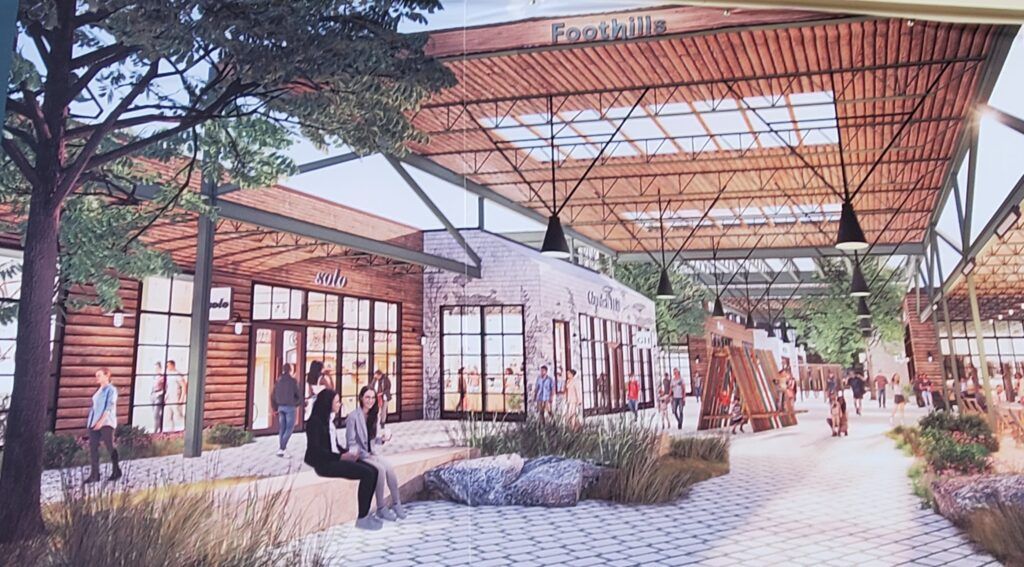
“Those will all be individual conversations with each of them,” Wood said. “Each of them may have a different outlook. We need to hear from them about what is their long-term view of Fort Collins. Do they still want to be here? Do they not see a future for themselves? That’s all going to be figured out over the next couple years.”
Added Parton, “We have a lot of great tenants that are already here. We look forward to working with them and roll them into the new project. Our hope is to have an inspiring enough project that they want to stay.
“The retail landscape is changing,” he said. “We’re seeing Macy’s leaving, so it doesn’t work for all tenants. All tenants aren’t looking at locations the same way they used to maybe 10, 15, 20 years ago when they originally signed these leases. We hope to keep a lot of the existing tenants here.”
Wood said another emphasis would be on attracting a mix of purveyors of food and beverages.
“That’s one of the things we heard a lot in our initial outreach,” he said. “There’s just not enough good food options in midtown, and really outside of Old Town.
“So we want eclectic food and beverage, and more experiential retail.”
The next steps for the developers, Wood said, will be “to submit formally to the city for preliminary design review. That’s really just an initial application with our design concept. Staff will review and give informal feedback. That is the formal moment that kicks off the public review process.”
Saturday’s public presentation was voluntary and not part of that official process, Wood said. “We wanted to do this before we submit anything formally. Once we do that, there is a city-mandated neighborhood meeting that we will host, usually within 30 days of that submittal. Then the bundle of entitlements we anticipate having to pursue are project design permits. There will probably be several of those. Those will all require hearings with the planning and zoning commission. During that process, I imagine we will be doing multiple outreach events. That may not all be giant public events like this. Over the past year and a half I have made presentations to CSU groups, chamber groups, the Visit Fort Collins tourist group. We will meet with anyone who’s interested in listening to us.”
A development project, Parton said, “is not just sitting behind your computer screen and coming up with a design. Big projects that are important to communities, they start right here, just listening, getting feedback and staying curious, which I think is really important, making sure that we create something the community can be really proud of. That doesn’t happen by just coming in and assuming you have all the right answers. It happens by taking the time to listen.”
But what if the feedback they get after Saturday’s presentation indicates that their vision — all those charts and all those renderings on the wall — isn’t what the public wants?
Wood’s answer was precise: “Then we will read it and listen to it and re-evaluate.”

Source: BizWest


